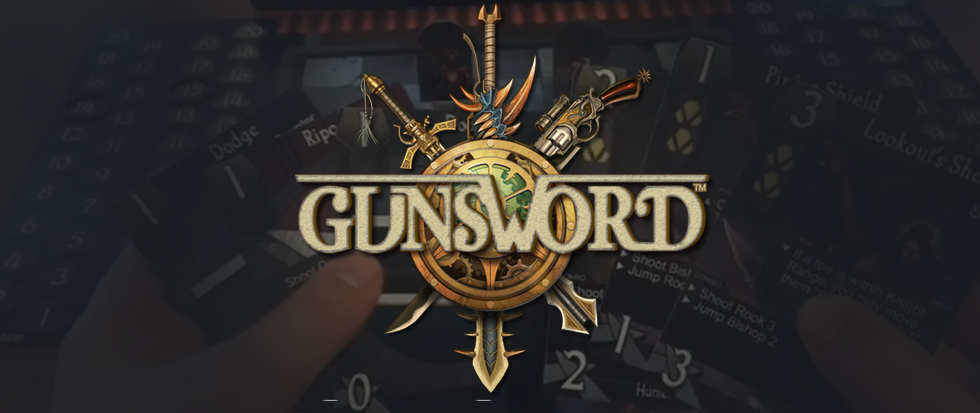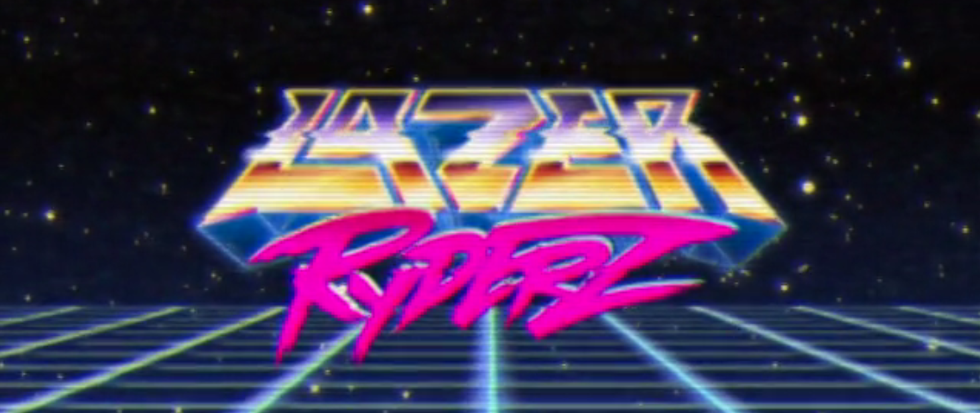
Gunsword, Casual Repartee, Chess and Dragonlance
I’ve long whimpered to myself and others that I don’t have a mind for chess, but honestly, I find it too intimidating. It was very abstract to my younger, NES-spoiled eyes, and strategizing involves a lot of thinking ahead which has never been an interest of mine. But when I reflect on my time living in New York, I often lament squandering my chance to learn chess from the best: old hustlers in the park. Only when forced to leave a city does one recognize all they missed out on, put off for too long, or took for granted, and I wish that I had strolled through Washington Square Park (or Union Square) and waved goodbye to a twenty to get some instruction on this generations-old paradigm for long-game positional thinking.
These thoughts preoccupied me when I sat to play Gunsword in the freeplay area of PAX Unplugged, after getting politely flagged to take a look. Gunsword whipped my head right over with delicious high fantasy visuals that brought to mind the Larry Elmore Dragonlance covers of my youth, and the only thing better than guns and swords is the fusion of the two. Summarily hooked, I was eager to assess the actual game and found enough bits going on to appear engaging but not so many that I was worried I’d be managing the economy of a small country until my legs went numb. Then Patrick Little, one of the designers over at Dinogami Games, began to explain how the mechanics of chess were involved, and my palms moistened.
At its core, Gunsword is a player vs. player deckbuilding game. There are cards, minis, a battle-grid, and a momentum and health tracker, but not so much stuff so as to be overwhelming. Each player chooses a character and a weapon, of which there are currently five each, and shuffles those respective cards together, with a few counter/dodge/riposte cards as well. So there are a significant number of build options at the start, though Patrick and co-designer Tayler Scisco say they have another 32 characters and 32 guns mapped out and ready for deployment should expansions become a possibility. The deckbuilding doesn’t get distressingly granular but there are still interesting choices to be made, and with some minor alterations depending on character abilities, the preparation aspect of the game is kept blissfully tight.
The blitz of this game plays out across the board. Each card usually gives the player both an attack and a move, which correspond to the modified chessboard and some minis to represent your combatants as they dance around each other to the tune of a rook, queen, knight, and so forth. You pay for these attacks with your momentum, which also determines who goes first, so blowing out with big swings often leaves you vulnerable. But even during attacks your opponent has an opportunity to counter, dodge, or spend cards to block with armor if they can. This establishes a lot of repartee that cracks open Gunsword where many other attempts at a PvP board/card game experience flounder.
Rather than feeling overwhelmed by options (or getting bored waiting for your brain-blanked opponent), you’re pushed to anticipate a few steps ahead with the five-ish cards in hand, to try and suss out your best play from the limited options available. This allows for more natural visualization of the board state and making sure you and your opponent are in the right spot when the bishop-style slash-dash goes down. There’s layers in each move, opportunities to respond to approximate a combative instinct, but restrictions that keep the action pulsating.
This is the kind of game that feels difficult to explain in words but intuitive in play, not unlike the centuries-old wargame that serves as a foundation. What Gunsword really builds on is the feel of a videogame PvP experience, more Dark Souls meets Street Fighter than Magic: the Gathering or Warhammer, with that interpersonal boardgame intimacy. There is no dungeon to explore or skill tree to manage, just your hand, your momentum, and your health, with a few special options to keep things spicy and engaging.
I managed to defeat Patrick, and I think he was only taking it a little easy on me as I scribbled notes and distracted him with questions about the North Carolina dev scene. My brain throbbed while trying to preempt his next possible moves, ideas of where to finagle my character for the best positioning as I waited to perform my most powerful assault while he was too flat-footed to counter. There’s plenty to ponder while dueling in Gunsword but the fray still feels fast and loose, and the final version will have obstacles on the board as well to spice up the maneuvering options, assuming they can bring in the backers for it on their Kickstarter. And I hope they do, as Gunsword was the ideal game of PAX Unplugged for me, a scrappy team setting up at an open table simply hoping to draw players in and spread the word. Maybe someday I’ll see them in the park and pony up for a educational rematch.
Gunsword is on Kickstarter now, please go back it so Levi can get his copy.





